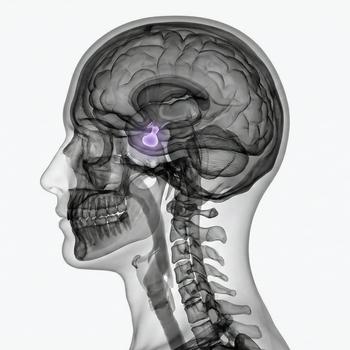Quick version
The sella turcica is a key structure in the skull that protects the pituitary gland and plays a crucial role in hormone regulation and neurological health.
- Protects the pituitary gland in the brain
- Located in the sphenoid bone, in the middle of the skull base
- Imaged with MRI in suspected tumors
- May be affected by conditions such as empty sella syndrome
- Important for diagnosing hormonal disorders
What is the sella turcica?
The sella turcica, also called the "turcica saddle", is a depression in the sphenoid bone (os sphenoidale) at the base of the skull. The sella serves as a protective bony structure for the pituitary gland and is an important landmark in radiological examinations of the brain.
Anatomical location
The sella turcica is located behind the optic chiasm and in front of the brainstem. It is located in the center of the skull base and is surrounded by important structures such as the optic nerves, cavernous sinus, and carotid artery.
Function
The main function of the sella turcica is to protect the pituitary gland, which regulates the body's hormone production by signaling other endocrine glands such as the thyroid, adrenal glands, and gonads.
Imaging and diagnostics
The sella turcica can be examined with magnetic resonance imaging (MRI) or computed tomography (CT) to identify tumors, cysts, or anatomical abnormalities of the pituitary gland. It is often a focal point in neurological and endocrinological investigations.
Variations and conditions
The size and shape of the structure can vary, which can sometimes indicate conditions such as "empty sella syndrome" or pituitary adenoma. These conditions can affect hormone balance and often require medical evaluation.
Relevant Symptoms
- Headache
- Visual Impairment
- Fatigue
- Hormonal Imbalances
- Increased Thirst or Urine Production
Related Conditions and Diagnoses
- Pituitary Adenoma
- Empty Sellar Syndrome
- Acromegaly
- Cushing's Disease
- Diabetes Insipidus

























